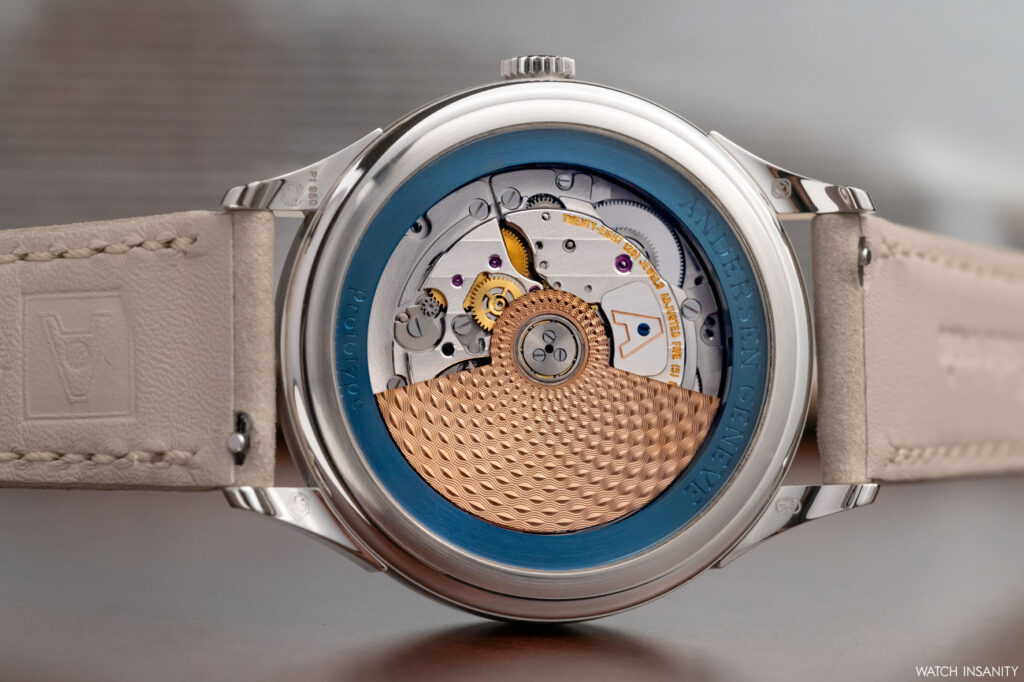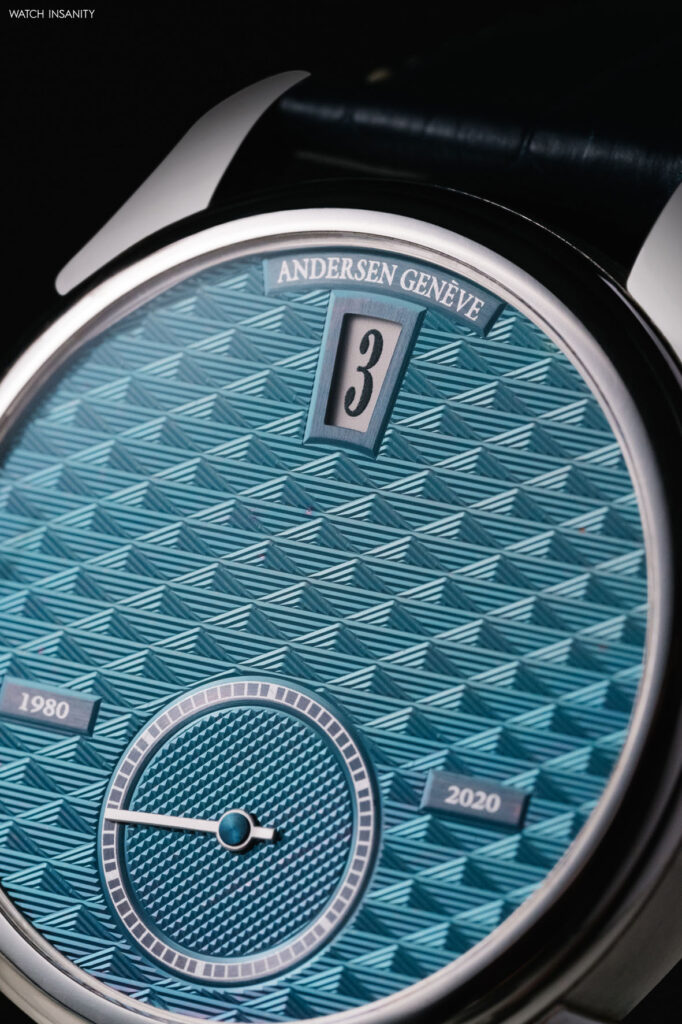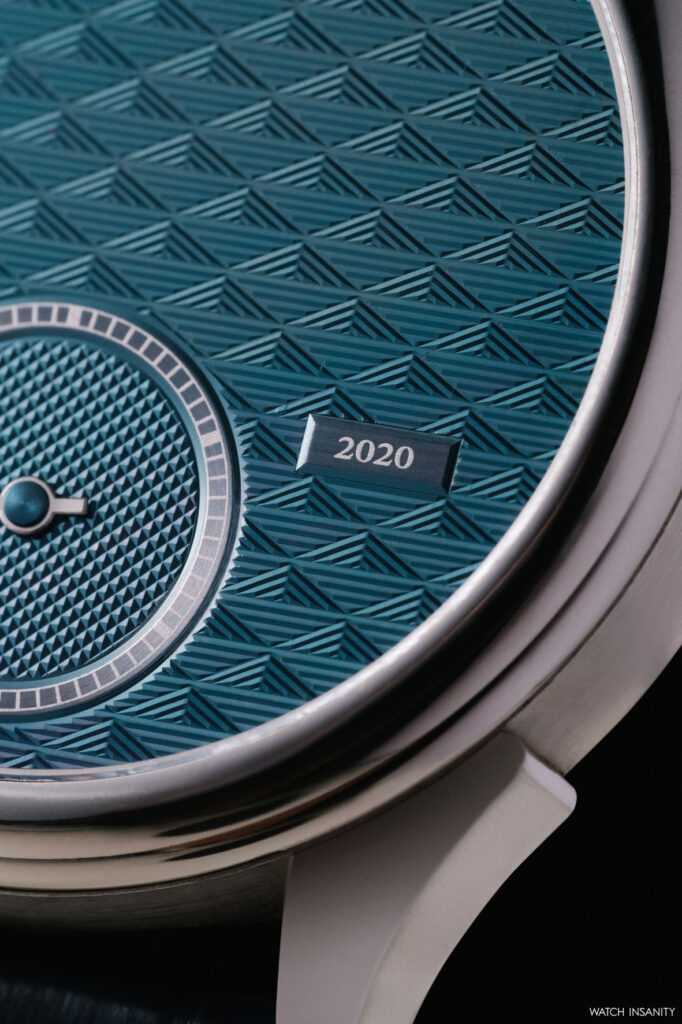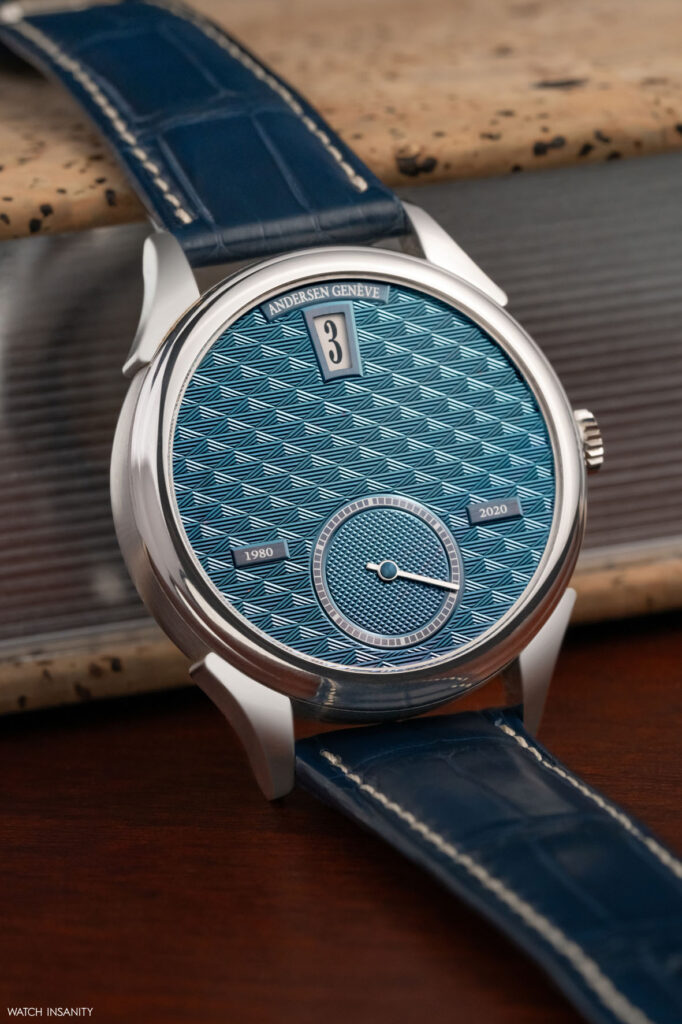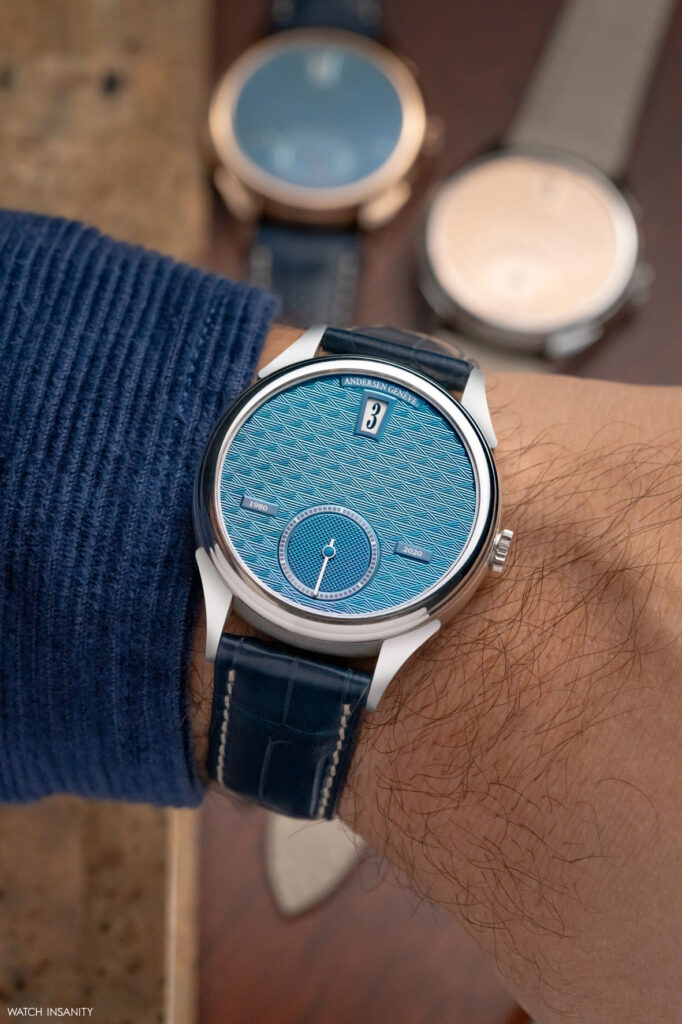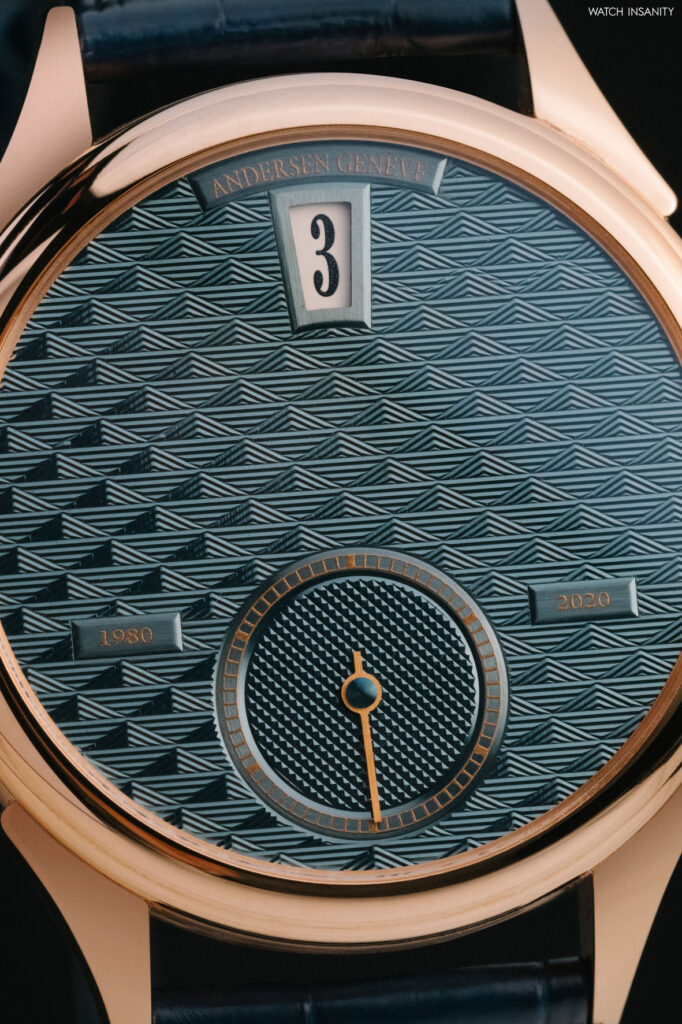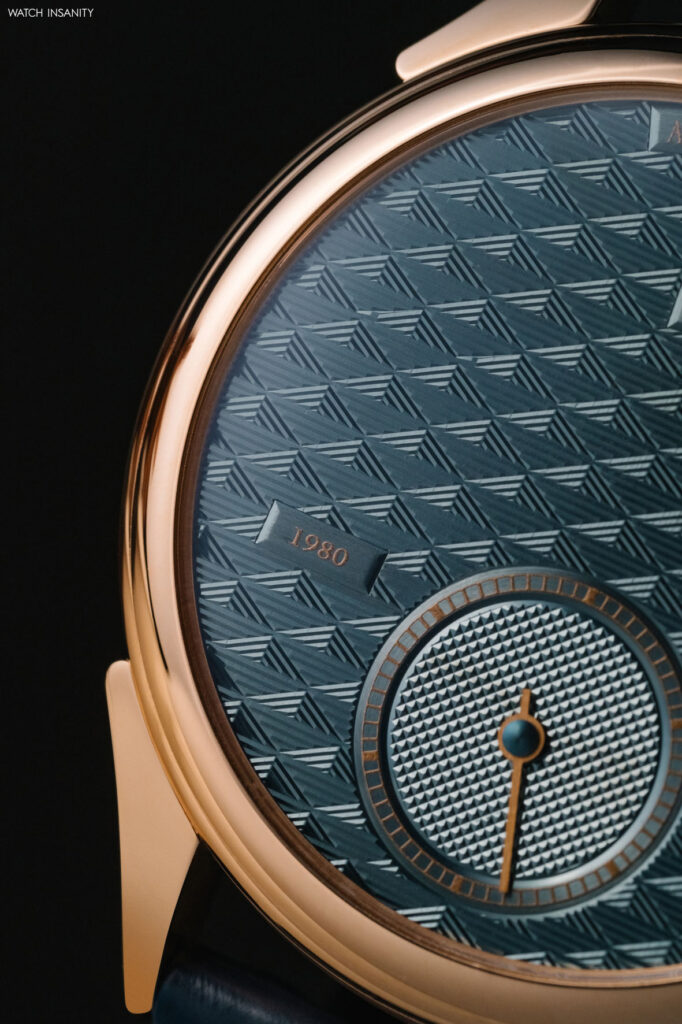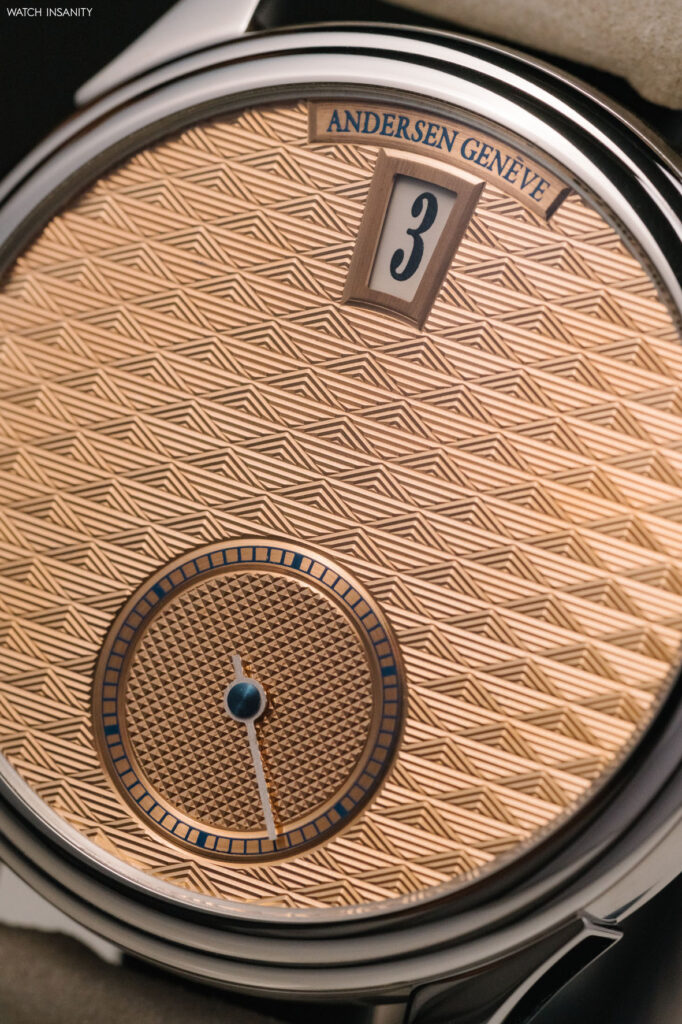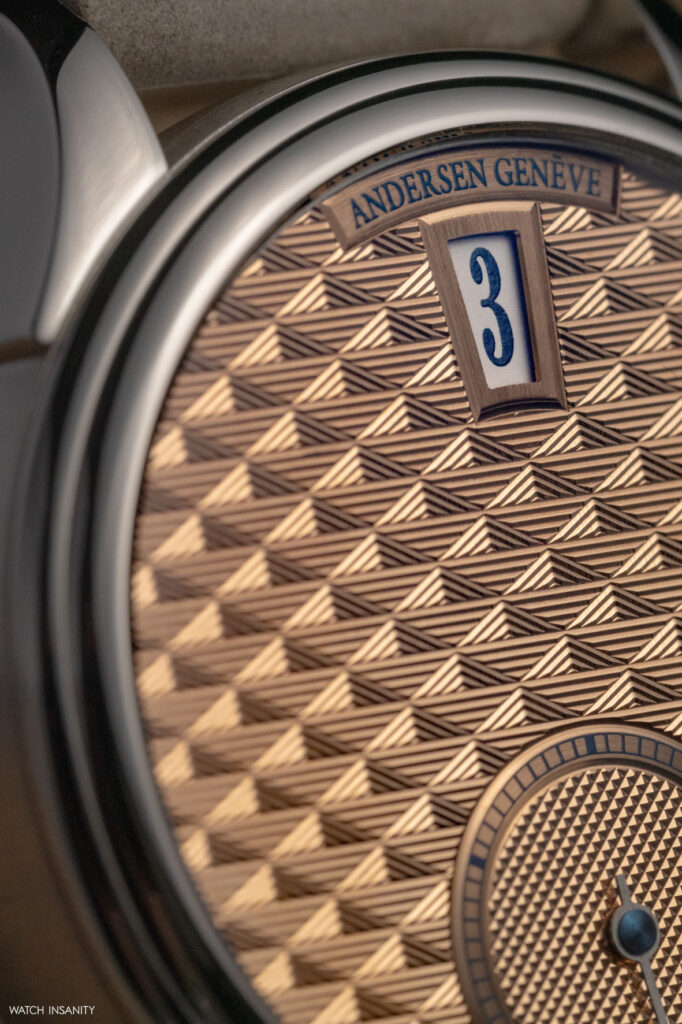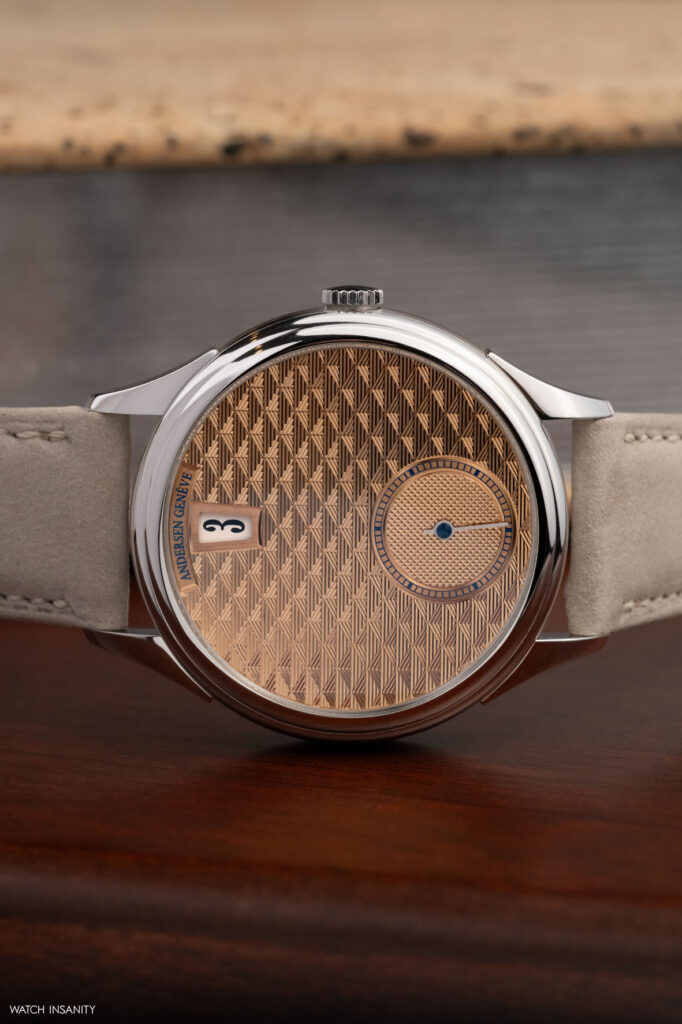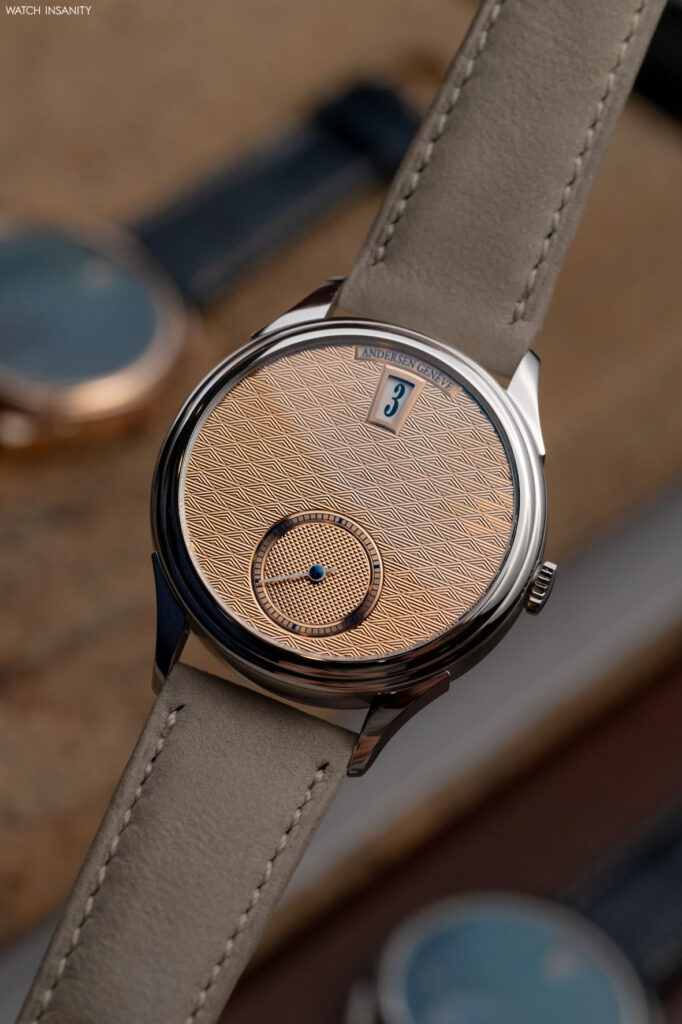Jumping Hours, Andersen Genève’s signature
30 October 2023Among the most fascinating complications in haute horlogerie are the so-called jumping hours. Complications into which some of the most prestigious brands have ventured, from A. Lange & Söhne to Chanel, from Breguet to Jaeger-LeCoultre, from Cartier to Patek Philippe. But there is one brand that, more than others, has linked its name to that of the jumping hours watch: Andersen Genève.
SWISS? NO, AUSTRIAN
The father of the jumping hours, however, was not Swiss but Austrian. This complication’s invention was in fact due to an engineer, Josef Pallweber, who patented this type of indication in 1883 – and that was later adopted as a feature on several pocket watches. Not surprisingly, these models were also called ‘Pallweber watches’. IWC acquired the licence for Pallweber’s patent and sold a large number of watches of this type.
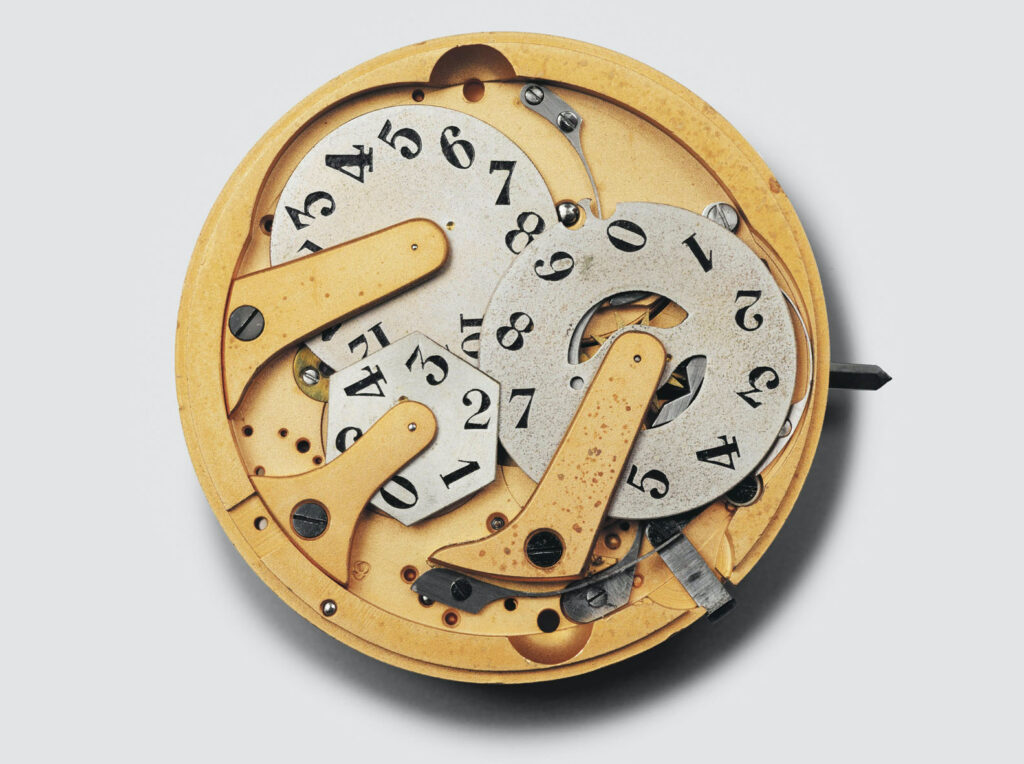
Around the 1920s, the complication also began to appear on wristwatches, which for some years had been rapidly growing in popularity. In 2010, the Swiss Marc Baltensweiler acquired the rights to the name ‘Josef Pallweber’ and, under the motto ‘It’s time to be different’, launched a number of models with a clear and straightforward design, equipped with the jumping hours function but which worked thanks to an entirely different system than that of Andersen Genève.
HOW JUMPING HOURS WORK
The way this complication works is quite intuitive. Jumping hour watches use a special mechanism that makes the time display so characteristic. Instead of relying on traditional hands, these watches use a disc or an aperture system to display the time in a digital format.
The hour number or hour window is usually positioned at the top of the dial, often accompanied by a minute indicator via a traditional hand or sub-dial.
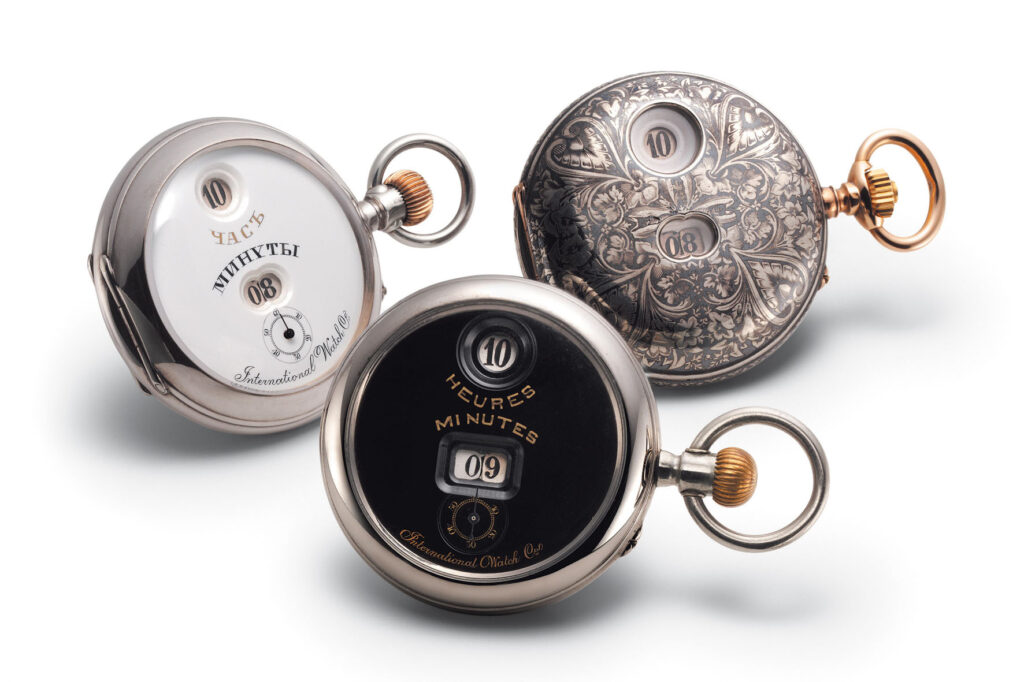
A seemingly simple display. Behind the scenes, however, a complex arrangement of gears, springs and levers powers the jumping hour mechanism. At the beginning of each hour, in perfect sync with the minutes and seconds, the hour figure makes an instantaneous jump to the next hour. This rapid transition is made possible by the release of mechanical energy within the movement.
At the heart of the mechanism is usually a snail-shaped cam or a star-shaped wheel, which control the jumping of the disc or opening of the hours. As the cam or wheel turn, they interact with a lever or rack connected to the hour display, causing it to instantly switch to the next hour position. This is the case in classical mechanisms. Andersen Genève’s, as mentioned above, has a different operating mode and architecture that make it unique.
The meticulous engineering required for jumping hour watches is a demonstration of the brand’s watchmakers’ experience and craftsmanship. The synchronisation between the jumping hour and the continuous movement of the minutes is essential to maintain an accurate time display.
ANDERSEN GENÈVE AND THE JUMPING HOURS
As mentioned, the master behind all this is the Andersen Genève maison. In 1995, a Spanish collector charged Svend Andersen to create such a watch, combining it with a minute repeater. Subsequently, the jumping watch was often commissioned as a unique piece and this gave rise to one of Andersen Genève’s most recognisable inventions, the ‘Jour & Nuit’.
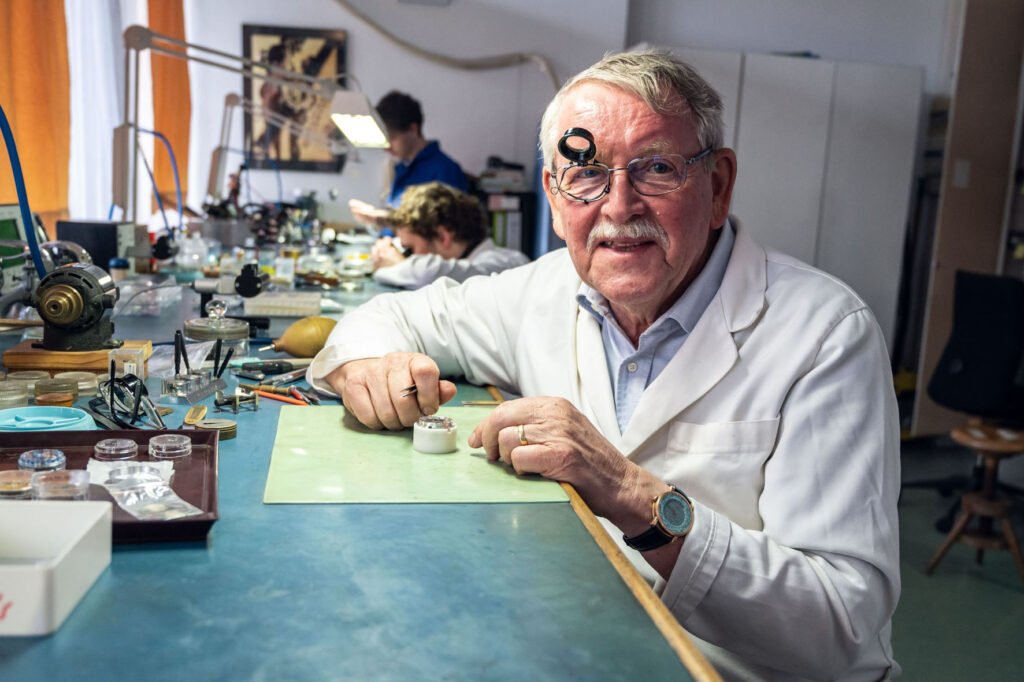
This ingenious design, which used the jumping hour module to handle a double-ended ‘jumping’ 24-hour hand, led to a series of ‘Grand Jour et Nuit’ watches created for Cartier in their Pasha Collection (made in 1998), as well as famous Andersen Genève editions.
Over the past few years, the brand has taken the jumping hours complication to new levels of artistry and beauty, creating watches that primarily highlight traditional craftsmanship. Not surprisingly, their Jumping Hours watches have been nominated for the Grand Prix d’Horlogerie de Genève in the Artistic Craftsmanship category in 2020, 2021 and 2023.
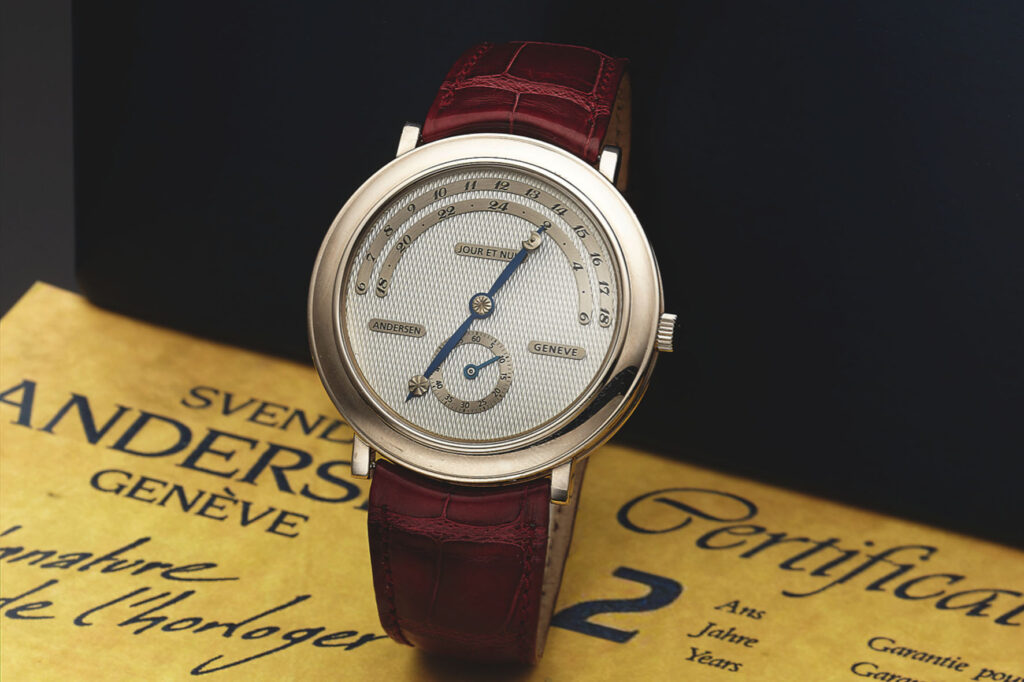
To best illustrate the degree of refinement achieved by the Geneva-based maison in the complication field, we have chosen two models: the Jumping Hours 40th Anniversary with a platinum or red gold case and a hand-finished BlueGold dial with guilloché work, and the Jumping Hours Rising Sun Edition in platinum with hand-finished dial and rotor with guilloché work. Let’s start with the first one, or rather the first two.
ANDERSEN GENÈVE JUMPING HOURS 40TH ANNIVERSARY
The Jumping Hours 40th Anniversary was presented by Andersen Genève in 2020 on the occasion of their 40th anniversary – an exclusivity in the watchmaking world. As always happens at the Geneva atelier, this timepiece was created with the help of exceptional craftsmen, masters in their respective fields.
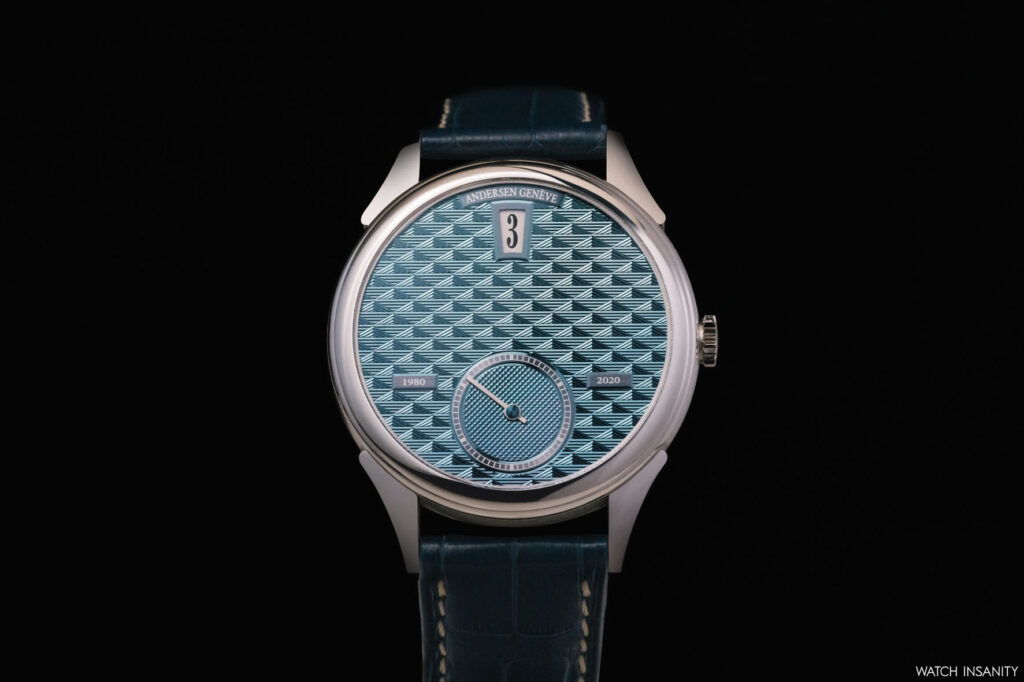
This is demonstrated by the people who worked on the dial defined by a motif called ‘Magical Losanges’ in 21-carat gold called BlueGold, a watchmaking rarity from Andersen Genève. This exclusive material is created by literally heating 24-carat gold, meshed with iron elements, inside an oven at a very specific temperature to obtain a radiant blue.
The guilloché hand finish is extremely difficult to produce because it requires the artisan to work with three different machines to achieve this level of detail. The lozenges’ continuous movement on the surface gives the dial a unique aspect, making it shine differently depending on the angle from which the light hits it.
The back of the watch shows a BlueGold ring hand-engraved with the words ’40 years of independent timepiece creation’ and an 18-carat yellow gold rotor, also hand-engraved, worked with a ‘grain d’orge’ motif. Standing out, engraved in the centre, the ‘A’: Andersen Genève’s logo.
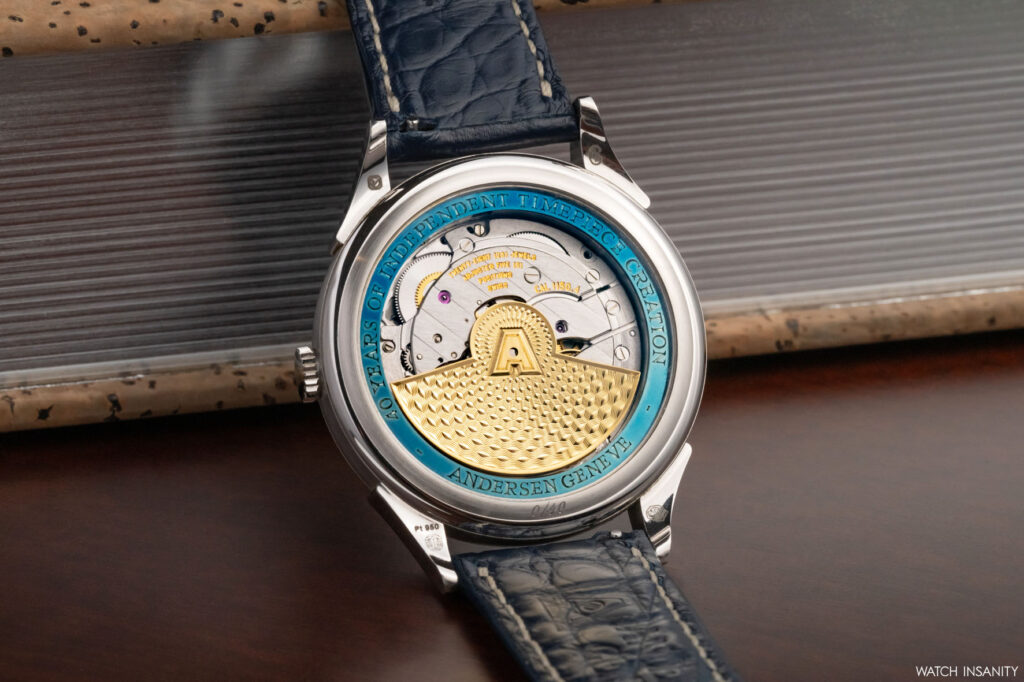
Visible through the sapphire glass back is the Frédéric Piguet 11.50 automatic calibre with double barrel, 70-hour power reserve and Jumping Hours function, developed and manufactured in the Andersen Genève atelier. The company’s watchmakers added their artistic touch with refined anglages on certain parts of the movement and perfectly polished screws.
RED GOLD OR PLATINUM
The red gold case has a very balanced diameter of 38 mm and a thickness of 9.22 mm, with a lug width of 19 mm and water resistance of 3 bar. The hours are displayed in a window at 12 o’clock, and there is a single minute hand inside a counter at 6 o’clock, worked with a fine ‘Clous-de-Paris’ finish. It is flanked by the inscriptions 1980 and 2020, underlining Andersen Genève’s 40-year milestone.
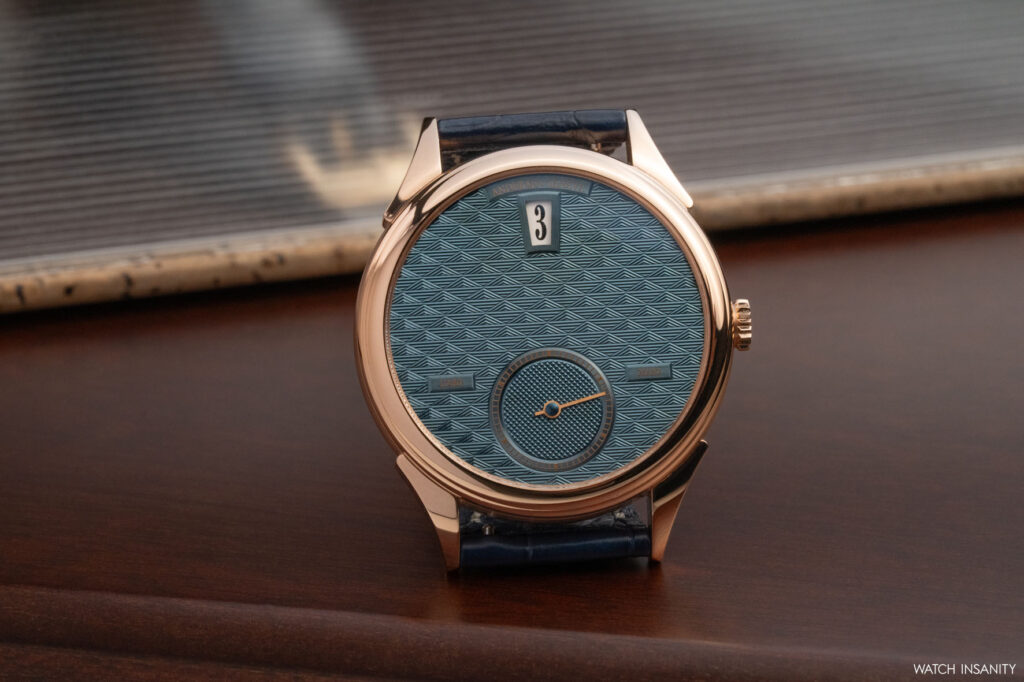
As mentioned, one version comes with a 950 platinum case. While the reference with the red gold case (CHF 41,600 excluding tax) is a numbered edition, the platinum version (CHF 48,800 excluding tax) is limited to 50 pieces. On the platinum version, as on all Andersen Genève creations, each element – dial, case, movement – is treated with equal care and superlative technique.
The platinum model raises the bar even higher, as platinum is known to be a much more demanding and difficult material to work with. It requires different finishing techniques and craftsmanship to achieve the most flawless result. For example, with this material the lugs have to be made separately and carefully soldered to the case.
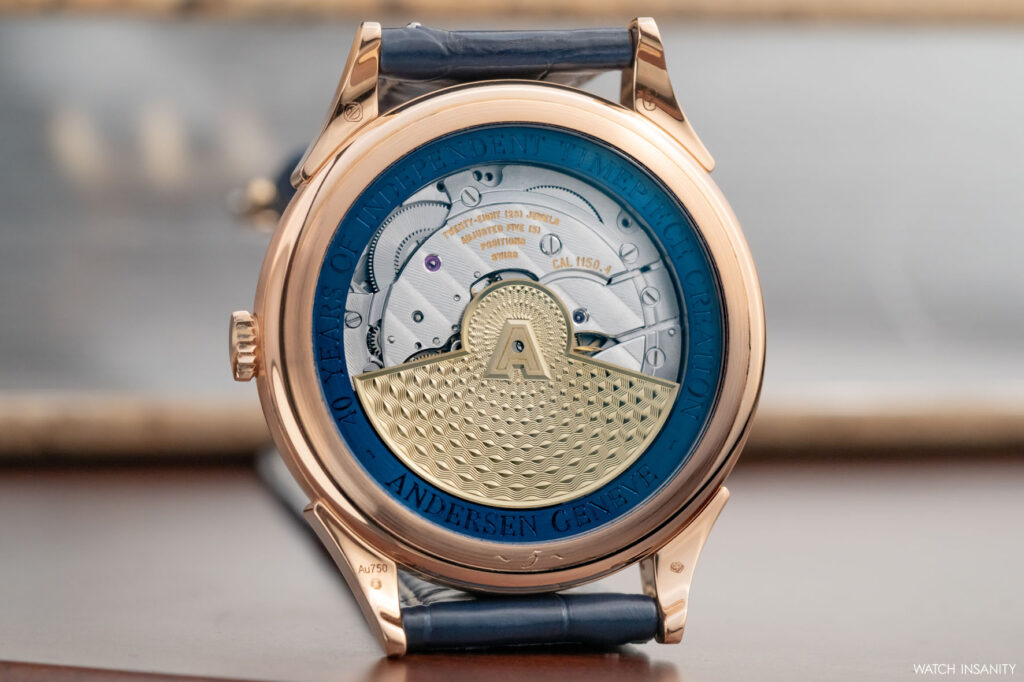
JAPAN AND ANDERSEN GENÈVE
Also made of platinum: the Jumping Hours Rising Sun Edition, the 2023 novelty presented in Tokyo last June at the residence of the Swiss ambassador to Japan. The reason for this bond between Andersen Genève and Japan is quickly explained and spans over thirty years.
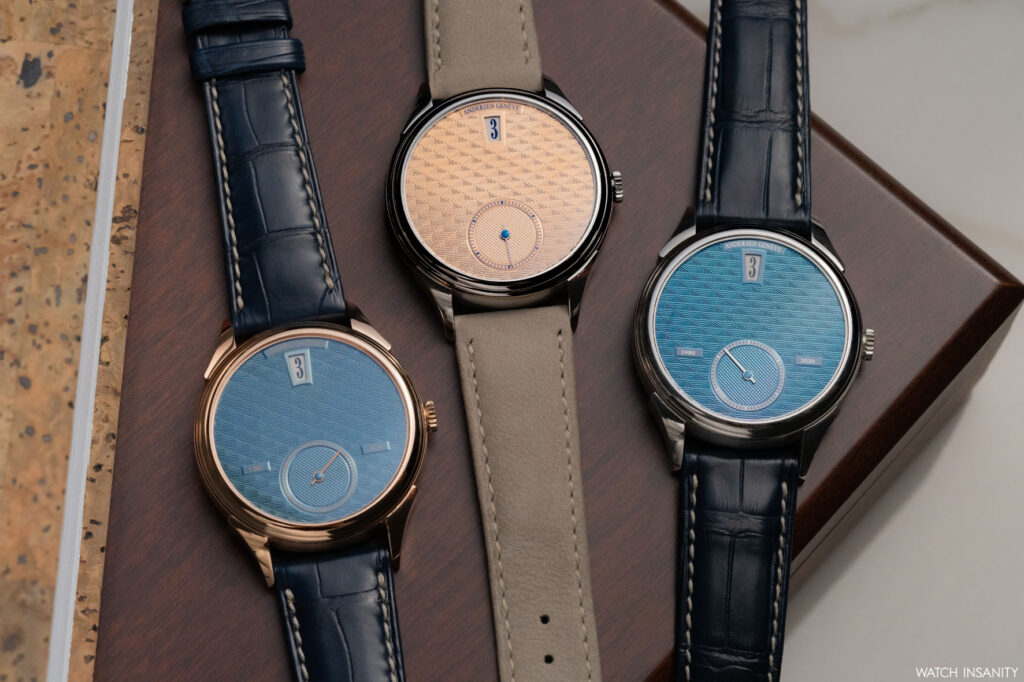
By the end of the1980s, Svend Andersen had earned great respect as one of the leading independent watchmakers. Especially in Japan, discerning collectors and enthusiasts quickly recognised the skill, artistry and inventiveness of his work. Thus a close relationship was established between Andersen Genève and the enthusiast community in that country.
Not by chance. In Japan, craftsmanship, detail and beauty are highly valued, and traditional watchmaking skills are held in high regard. Since then, Andersen Genève has created many important pieces for Japanese collectors. Watches that include several one-off pieces and the famous worldtimer ‘Voyage’, a limited edition of 50 pieces made in 2005 in collaboration with Yoshi Isogai of the famous retailer Shellman.
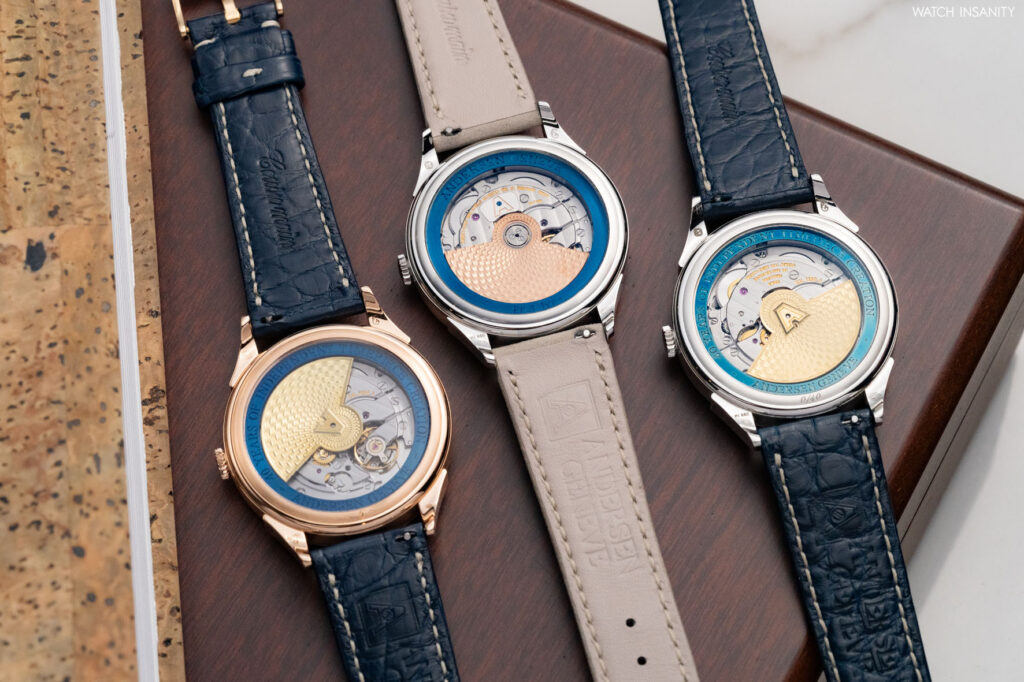
Isogai was in fact the owner of the Shellman boutique in Tokyo’s Ginza district. He introduced and distributed independent watchmakers such as Philippe Dufour, Svend Andersen, Beat Haldimann and others. Thanks to his passion for fine details and watchmaking, some of Andersen Genève’s finest timepieces can be found on the wrists of Japanese collectors.
ANDERSEN GENEVE JUMPING HOURS RISING SUN EDITION
In the Jumping Hours Rising Sun Edition, the jumping hours complication comes with an 18-carat rose gold dial and in a handcrafted platinum case. As usual, the hour is displayed through a window at 12 o’clock, while the minutes run on a counter at 6 o’clock, indicated by a white gold hand. The printed minute track is a blue chemin-de-fer, the same colour as the Andersen Genève logo above the hour window.
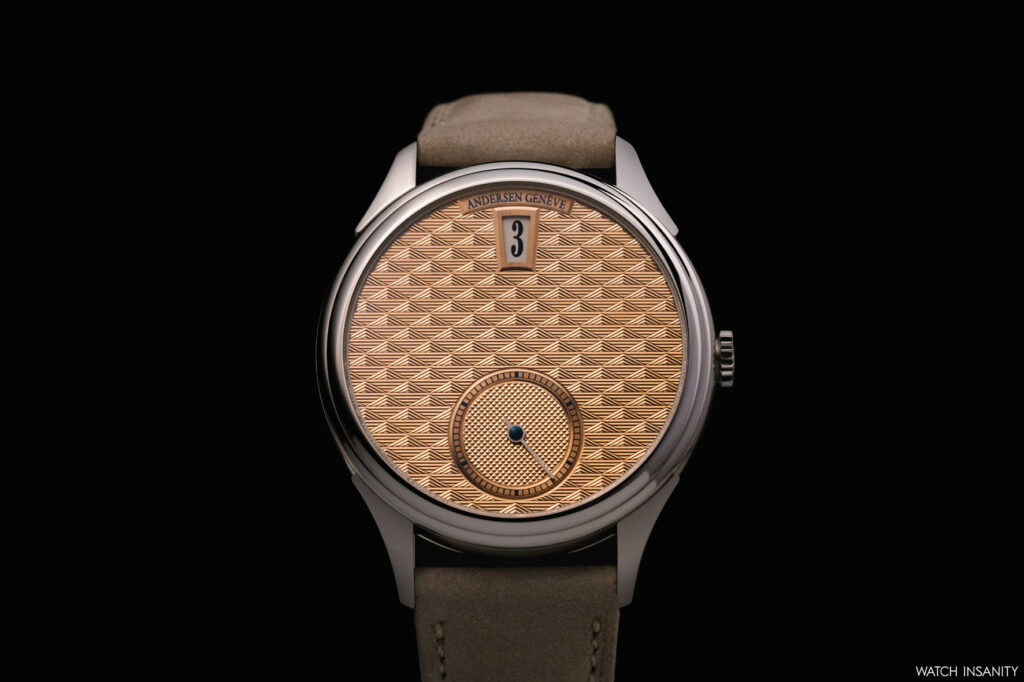
Here, as in the 40th anniversary watches, the dial features the same hand-finished ‘Magical Losanges’ decoration using the guilloché technique directly on the pink gold surface. Clous de Paris, on the other hand, on the minute counter.
The platinum case is the same size as that of the 40th edition and is finished using different machining techniques, all taken to the highest quality level to achieve an impeccable finish: the sides are satin-textured, while the bezel is mirror-polished. The curved lugs, typical of Andersen Genève, are made separately and soldered to the case, as is the case in the 40th version.
The sapphire crystal case back allows a view of the Frédéric Piguet 11.50 automatic calibre and its hand finishing, including the meticulous angling around individual parts, the Côtes-de-Genève machining, the mirror polishing of the screw heads, and the 18-carat rose gold rotor decoration. All executed in house by Andersen Genève’s craftsmen. The calibre, with double barrel, works at 21,600 vibrations per hour and has a 70-hour power reserve. The watch costs CHF 48,800 excluding tax, and comes in a limited edition of 50 pieces.
By Davide Passoni
